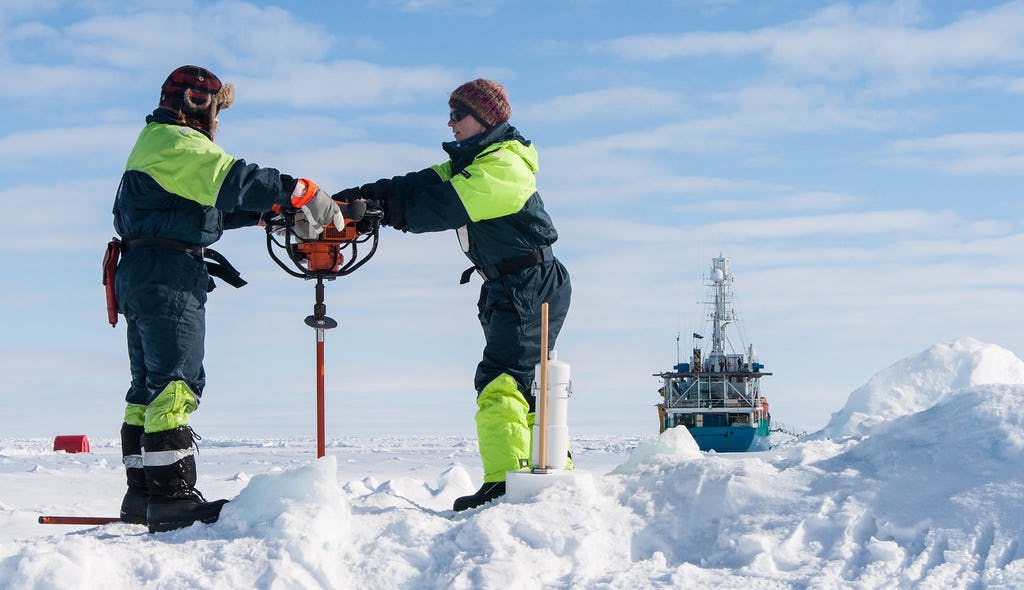The Reach of Arctic Research - Infographic

Various types of research that take place in the Arctic, such as gathering climate history information from ice drilling, have global impacts. Photo: World Meteorological Organization
Arctic regions are generally perceived as remote; however, the influence of research that takes place in these areas transcends beyond Arctic borders and contributes to the global public good. Unique geological, cultural, and climatic conditions allow for imperative research to take place that couldn’t be conducted in other parts of the world. The depths of the Arctic ice sheets provide insight into millions of years of climate history, indicating what we should expect as our current climate is changing. Oral histories of indigenous communities combined with scientific insight lend a hand in shaping important research questions. Harsh environmental conditions and community reliance on diesel make sustainable innovations a necessity that can then be globally implemented. Circulation of heat from temperate and tropical regions to the arctic make studying Arctic climatic changes essential to understanding the redistribution of global heat gain.
This infographic designed by Jennifer Cook provides a peek at the wide breadth of research that takes place in the Arctic, spanning from sociolinguistics to microbial ecology, and where major hubs of research are located. A worldwide understanding of its societal impacts is an important first step in making sure Arctic research gets the support it needs to continue.